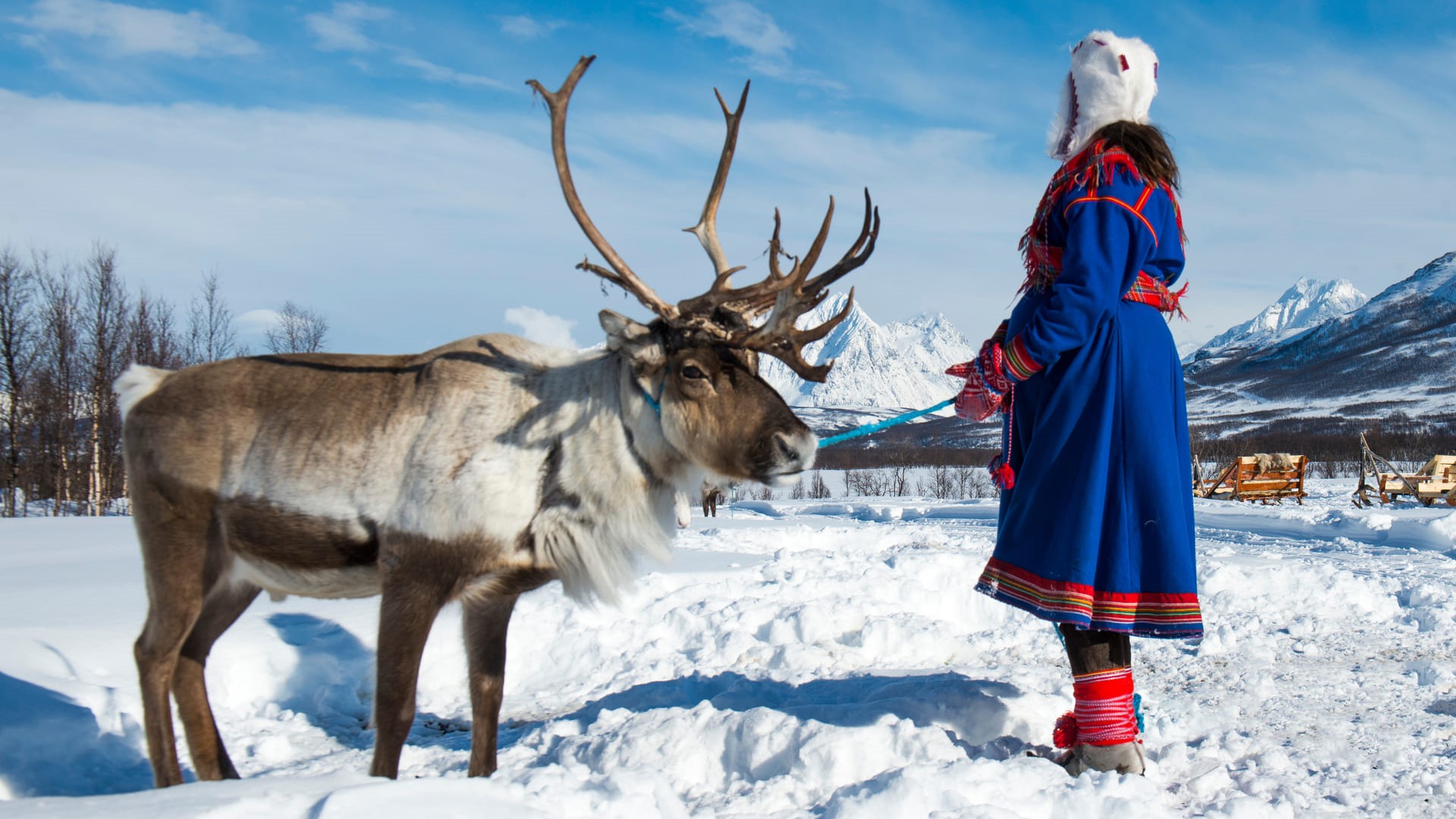Sustainable use of resources by Sami people
The Sami way of life is deeply connected to nature. Their traditional knowledge, based on generations of experience, uses natural materials for building. Old structures gradually return to nature, leaving minimal traces like stones around fireplaces, blending into the landscape.

Sustainable living fully based on nature
Sami livelihoods were almost entirely based on nature’s bounty: fish from the lakes, vegetables such as Rumex acetosa and Angelica Arcangelica, as well as reindeer meat and milk. When a reindeer was slaughtered, all parts of the animal were put to use. Fur was used for clothes, meat and marrow for food, sinews for making threads and antlers for handicraft.

Historically, reindeer cows were milked during late summer and autumn, and milk was used to make cheese. Sorrel blades were mixed with the milk, which was stored and fermented to create a product called Juobmo, which is comparable with modern day yoghurt. Discrete traces of these intensive reindeer herding and milking practices can be still found in the mountains’ green summer meadows.
Sami traditional way of life affected
During the twentieth century, the Sami way of life started to become affected by changes in the adjacent world. One of the most significant being the replacement of reindeer with snowmobiles for transport. Modern vehicles remain a part of reindeer herding today. During winter, families live in modern houses and children go to school. However, the moveable tent is still used in summer during calf marking, when the whole family can stay together in the mountains for this intensive period of work. Sami traditions are still strong and, among reindeer herding families, the reindeer and products from the animals are still the focus of everyday life.
Industrial sectors
- Agriculture, forestry and fishing
- Construction
- Activities of households as employers; undifferentiated goods- and services-producing activities of households for own use
Habitat at the New European Bauhaus Festival and the STI Forum
This story is part of “Habitat: Embracing change in the post-2030 future”. Habitat was discussed at the side event “New habitats for the post-2030 future” during the New European Bauhaus Festival on 10 June 2022. At the STI Forum of 2023, a science policy brief recommendation on Habitat was published under the category “science-policy-society interface”: Enablers for transformative change to sustain people and nature-centred world. Download recommendation >
Contribution to story
- This is “HABITAT: Embracing Change in the Post 2030 Future” Exhibition designed and curated by Dr Sandra Piesik, 3 ideas B.V in collaboration with HABITAT Coalition and VITO
- Copy editing by Katleen Vandormael, Communication Manager G-STIC, VITO
- Cover image: Pine forest background in the summer of Sweden © Rachapong, Shutterstock
- “HABITAT: Vernacular Architecture for a Changing Planet” published by Thames & Hudson
- “HABITAT: Vernacular Architecture for a Changing Planet” published by Abrams
- “Habitat: Traditionelle Bauweisen für den globalen Wandel” published by DETAIL Special
- “Habiter la planète: Atlas mondial de l'architecture vernaculaire” published by Flammarion First Prize Winner at “J’aime le livre d’art”, Paris 2017
- “HABITAT: Arquitectura vernácula para un planeta cambiante” published by Blume
- “HABITAT: Vernacular Architecture for a Changing Climate’ published by Thames & Hudson UK, USA, and Shufuhsa
This expert story is written in cooperation with Isse Israelsson (†), Curator @ Ájtte Mountain and Sami Museum
